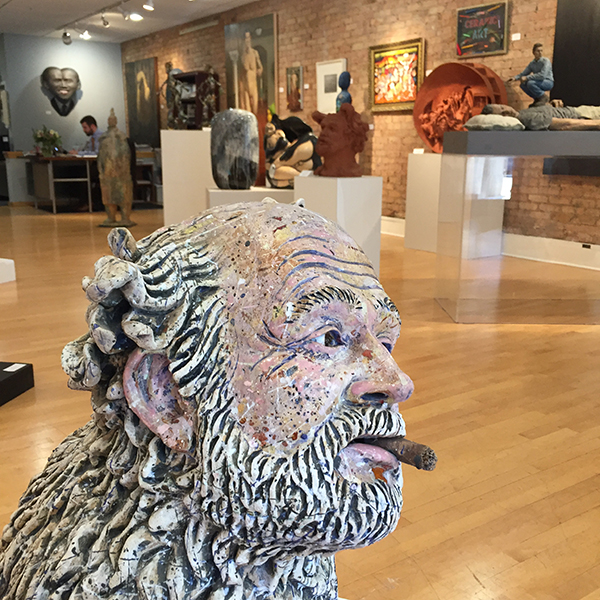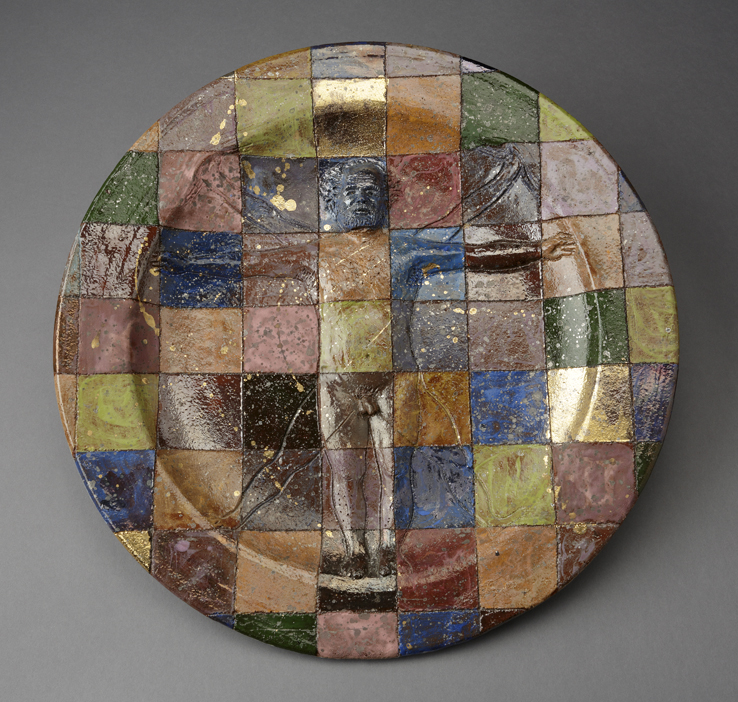CLAY IS HOT! — CONNOISSEURSHIP: Buy, Sell, Give
Join us in the gallery at Ferrin Contemporary
Connoisseurship: Buy, Sell, Give
on Sunday, July 10, 2016, 3pm
1315 MASS MoCA Way, North Adams, MA
Click here to RSVP.
CLAY IS HOT! — CONNOISSEURSHIP: BUY, SELL, GIVE is a moderated panel discussion among art professionals and collectors presented in the Ferrin Contemporary gallery at 1315 MASS MoCA Way in North Adams, on Sunday, July 10, 2016, from 3:00 to 5:00 p.m. Moderator Leslie Ferrin will lead panelists in a conversation-style discussion and exchange with the audience about issues surrounding changes taking place in and impacts on public and private collections. This event is free and open to the public, but reservations are requested.
Ferrin explained “We are in the midst of ‘The Great De-accession,’ the result of a generation of baby boomer artists and collectors downsizing simultaneously. Starting with the question of what to do ‘when the kids don’t want it,’ those who are in the midst of this dilemma are leading the way and finding successful approaches to shifting of collections, archives, and libraries. In the process, a by-product is the development of a new generation of collectors, curators, and art professionals who are involved in exploring various strategies to build collections and establish legacies for the artwork of the late 20th and early 21st century.“
The panel will address issues especially relevant to those who wish to sell and give and will discuss the challenges of sharing information about their collections. For many who were born before the computer was a commonly used tool, it is daunting to prepare documentation that establishes provenance and insures their legacy in what is now predominantly a digital world. For those who bought (and sold) at the peak of the market, the results from artwork sold at auctions now can be quite surprising as they create first time public records for living artists and establish new, lower values that are subsequently used in appraisals. While sellers are carefully considering their options, buyers are finding collecting in the 21st century increasingly easy due to the level playing field created by the Internet where access to information and markets are readily found with a Google search.
This conversation about how these trends are impacting each of the panelists and their answers to “what to do when the kids don’t want it” will also be available as a video on YouTube.

THE PANELISTS
The panel will consist of Doug Anderson, art collector; Mark Leach, independent curator and author; Suzanne Ramljak, art historian, author, editor, and independent curator; and Emily Zilber, Wornick Curator of Contemporary Decorative Arts, MFA Boston.
DOUG ANDERSON
Dale and Doug Anderson began collecting studio glass in the middle of the 1970s. This led to an exploration of the Studio Crafts movement as well as Northwest Coast tribal art and Chinese cultural relics. At the turn of the 21st century, Dale began to collect contemporary photography (primarily Chinese) with an eye attuned to subject matter that both attracts and repels viewers. Dale was the primary collector with Doug playing a supporting role as an activist on behalf of artists through his positions on the boards of Creative Glass Center of America and the Art Alliance for Contemporary Glass. As their collection grew and Dale’s interests changed, Doug’s role was to arrange for donations and sales of more than 1,500 works from their collection to 14 museums in the United States and London. Doug and Dale were both members of the Board of Trustees at Pilchuck Glass School for 15 years and co-founded AIDA, the Association of Israel’s Decorative Arts.
MARK LEACH
A native of Pittsfield, Mark Leach is a contemporary arts curator, author, and consultant. He was formerly the Executive Director of the Southeastern Center for Contemporary Art in Winston-Salem, North Carolina, and was the Founding Director of the Mint Museum of Craft & Design. Mr. Leach is a former trustee of the Art Alliance for Contemporary Glass and the American Craft Council and served on the Advisory Board of the National Council on Education in the Ceramic Arts (NCECA). Leach has served as curator, essayist, and editor throughout his career. He has held curatorial posts in contemporary art in Arkansas, Montana, North Carolina, Wisconsin, and Ohio. He has authored many articles for arts publications and published numerous texts featuring individual artists and craft genres. His book Michael Lucero: Sculpture 1976–1995, established this artist as a leader in the field of figural sculpture.
SUZANNE RAMLJAK
Suzanne Ramljak, an art historian, writer, and curator, is currently editor of Metalsmith magazine and curator at the American Federation of Arts, New York. Ramljak was formerly editor of Sculpture magazine and of Glass Quarterly, as well as associate editor of American Ceramics. She has authored several books and catalogues, among them Crafting a Legacy: Contemporary American Crafts in the Philadelphia Museum of Art and Unique by Design: Contemporary Jewelry in the Donna Schneier Collection (Metropolitan Museum of Art). Her new book series, Art à la Carte, will launch next year with the first volume, Busted: Contemporary Sculpture Busts. Ramljak has been a contributor to numerous other publications including Objects and Meaning: Readings that Challenge the Norm; Against the Grain: Wood in Contemporary Art, Craft, and Design; and Innovation and Change: Ceramics from Arizona State University. Ramljak has worked in the curatorial departments of the Detroit Institute of Arts, The Solomon R. Guggenheim Museum, and the University of Michigan Museum of Art. Among the exhibitions she has curated are: “Elie Nadelman: Classical Folk,” “A Disarming Beauty: The Venus de Milo in 20th-Century Art,” and “Seductive Matter.”
EMILY ZILBER
Emily Zilber is the first Ronald L. and Anita C. Wornick Curator of Contemporary Decorative Arts at the Museum of Fine Arts, Boston. She is responsible for the MFA’s contemporary decorative arts program. Prior to joining the MFA, Zilber was Assistant Curator at Cranbrook Art Museum at Cranbrook Academy of Art in Bloomfield Hills, Michigan. She has edited and written for numerous publications; speaks regularly on topics related to 20th and 21st century decorative arts, craft, and design; and is a founding member of the Boston-based consortium The Commonwealth of Craft.
Click here to subscribe and hear about upcoming events.
Click here to view or download press release.
Click here to read Leslie Ferrin’s blog post, “What happens when the kids don’t want it.”










You must be logged in to post a comment.